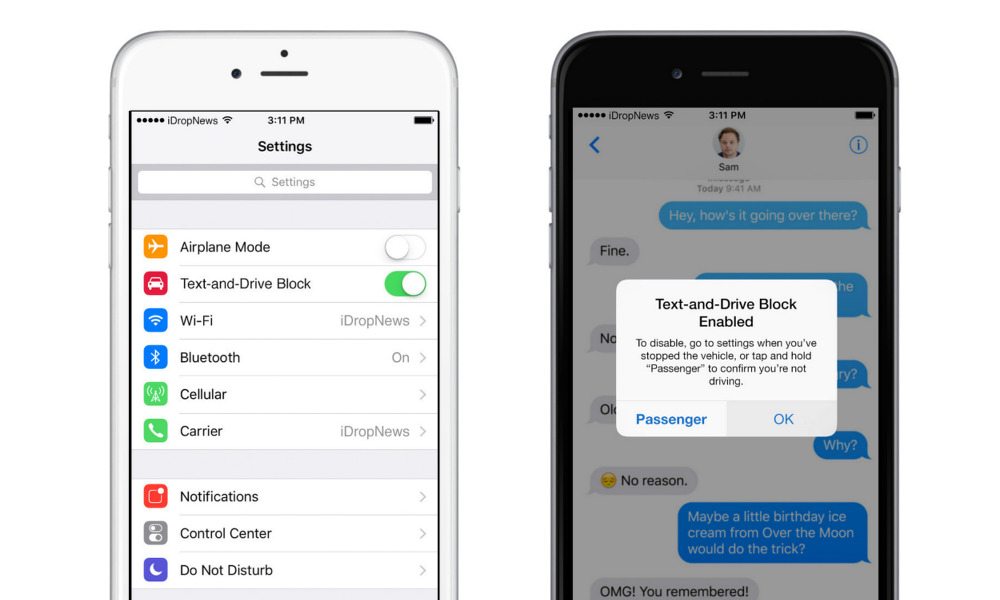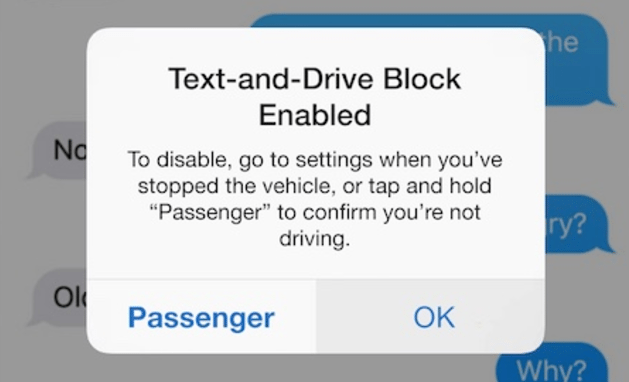Should Apple Block iPhone Use While Driving?

Toggle Dark Mode
Apple has been the target of two recent lawsuits accusing the influential tech company of not doing enough to prevent people from using its iPhones in dangerous ways while driving cars.
Last month, a California man launched a class-action lawsuit against Apple for failing to deploy iPhone safety features to prevent texting while driving. Julio Ceja, an Orange County resident, was injured when he was rear-ended by a woman who was allegedly distracted by her iPhone. Ceja is not seeking monetary damages and instead seeks to block sales of iPhones without lock-out mechanisms in California and force Apple to install them in all its mobile devices.
iDrop News has developed concept renderings that depict how such a feature, dubbed Text-and-Drive Block, would function.
Ceja argues that texting while driving is “an extremely serious social problem” and identifies the iPhone as a major culprit behind it. “At the center of the epidemic is Apple’s immensely popular iPhone, a product that has generated hundreds of billions of dollars of profit for the company,” reads the complaint, which was filed in Los Angeles County Superior Court and acquired by Ars Technica.
Ceja’s legal action came just weeks after a similar lawsuit against Apple was filed by a Texas couple whose 5-year-old daughter was killed by a driver allegedly distracted by FaceTime. Both lawsuits point out that Apple has held a patent for technology to prevent texting while driving since 2014.
The patent states that “a handheld computing device can provide a lock-out mechanism without requiring any modifications or additions to a vehicle by using a motion analyzer, a scenery analyzer and a lock-out mechanism.” The feature would ostensibly be able to identify whether a device is being used in a car as opposed to a train.
Apple originally filed the patent application back in 2008. In it, Cupertino wrote: “Texting while driving has become so widespread that it is doubtful that law enforcement will have any significant effect on stopping the practice”.
As smartphones come to support more apps, features, and games like Pokémon Go, it’s likely that their allure will continue to grow as well, to the extent that such technology could be characterized as having addictive qualities. Apple’s patent suggests that it is aware of the powerful temptation its products pose to drivers, despite laws prohibiting irresponsible use of phones on roadways.
Indeed, while texting and driving is illegal in 46 states and in the District of Columbia, traffic safety experts believe that distracted driving is responsible for the significant increase in car accidents the US has seen in recent years, according to the New York Times. US traffic fatalities spiked 7.1 percent in 2015, marking the largest such increase in fifty years, according to the National Highway Traffic Safety Administration (NHTSA). This fact prompted the NHTSA to issue guidelines last November calling on smartphone manufacturers to implement driver modes on their devices that simplify interfaces and block the use of certain apps while driving. The voluntary guidelines also call for the development of technology to identify drivers so that the limitations are not applied to passengers, though it’s unclear how accurate it would be. The New York Times has identified one such device created by Cellcontrol that can be mounted on the dashboard and uses sound waves to determine whether a phone is located in the driver’s seat. It costs $129, however, and sometimes affects phones located behind the driver as well.
The likelihood that lock-out mechanisms will affect passengers as well as drivers has been a common concern voiced in response to calls for tech companies like Apple to take more drastic measures to reduce the incidence of distracted driving.
Do you think Apple should create a lock-out mode to limit iPhone usage while driving? #applenews https://t.co/2m2V32b2Cd
— iDrop News (@iDropNews) January 18, 2017
A Twitter poll conducted by iDrop News found that a slight majority of respondents (52%) believe that Apple should not implement a lock-out mode to limit iPhone usage while driving. Two users raised the question of whether such measures would impact passengers in addition to drivers in response to the poll.
One fix for this issue is to include an opt-out measure that would allow passengers to circumvent the lock-out. Of course, the major issue with the opt-out feature is that it is also available to drivers who lack the ability to police themselves while driving.
Short of the development of technology that can identify drivers with pinpoint accuracy, the question of forcibly disabling drivers’ smartphones will remain controversial. It appears that both tech companies and a substantial number of smartphone users are unwilling to accept more intrusive measures to prevent distracted driving if it curbs passenger use as well. Indeed, one of the joys of the smartphone era is precisely having the option to use your phone during such sedentary interludes. And no tech company appears to be willing to be the first to take the plunge and force such measures on customers at the risk of substantial churn.
Another question is whether Apple, given its influence, bears a moral responsibility beyond the law to adopt such measures regardless of customer objections and financial ramifications.










